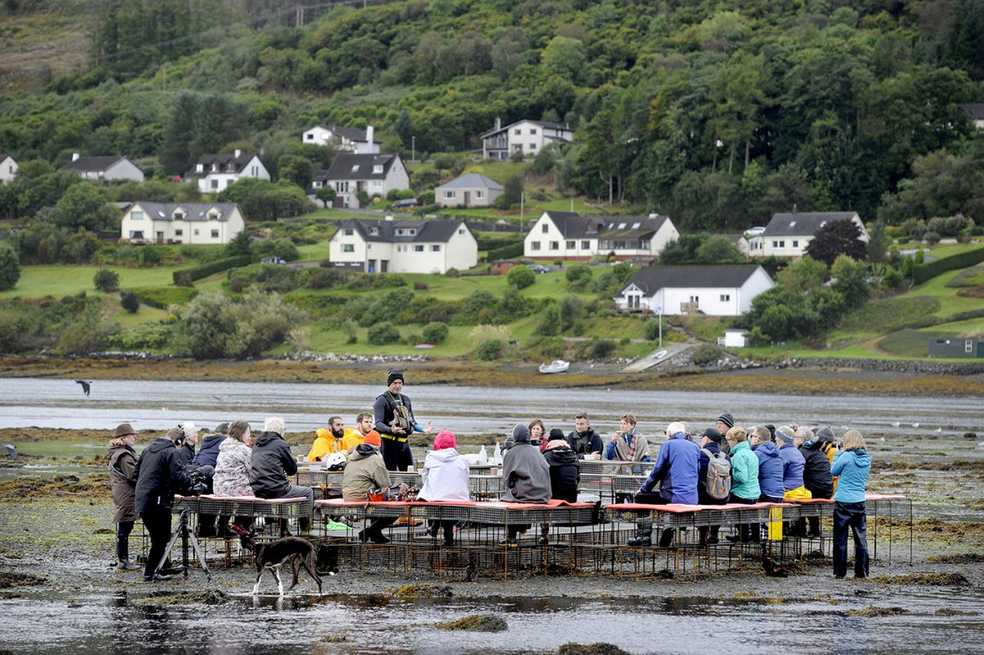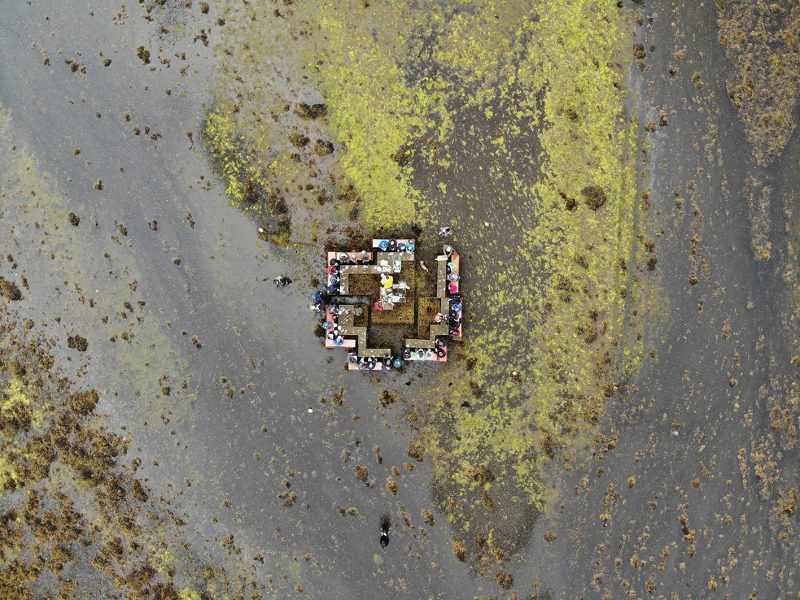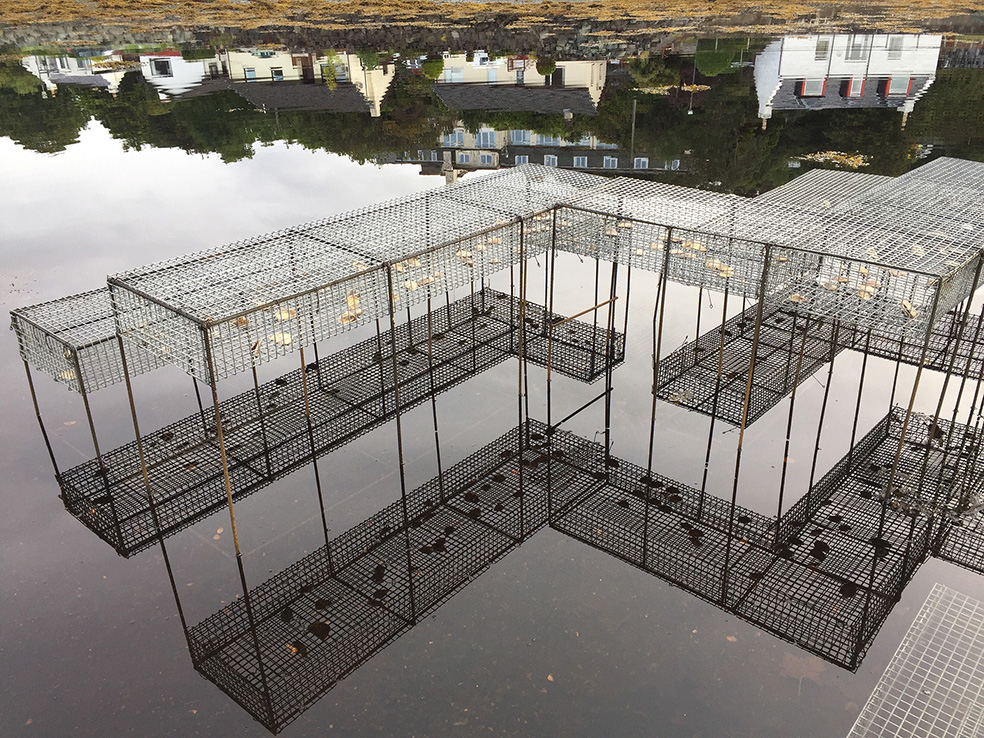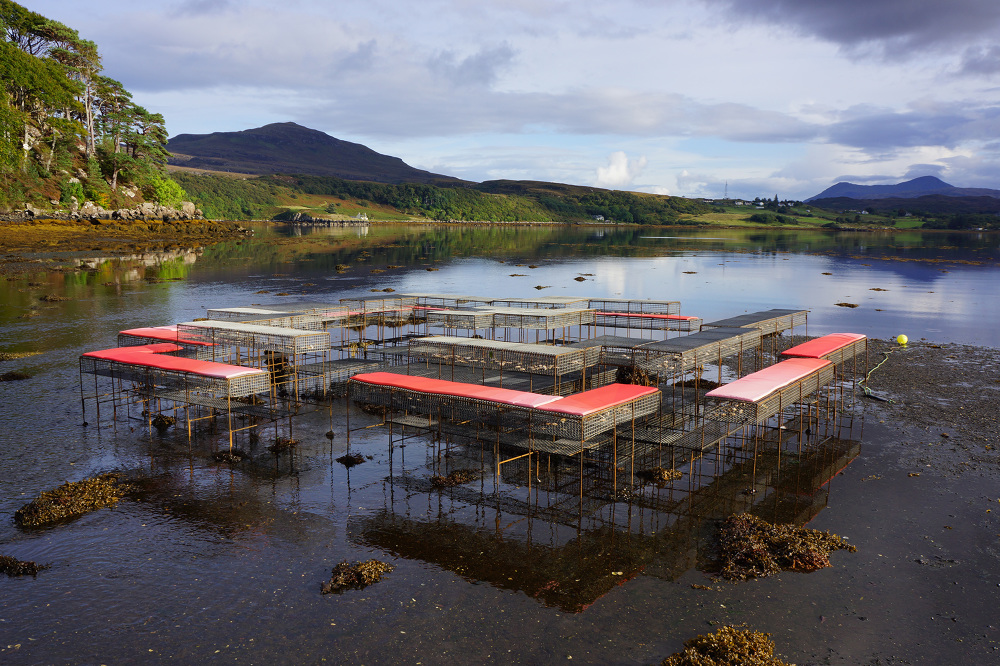CLIMAVORE: On Tidal Zones explores the environmental effects of aquaculture and reacts to the changing shores of Portree, Isle of Skye. Each day at low tide, the installation emerges above the sea and functions as a dining table for humans, with free tastings of recipes featuring ocean cleaners: seaweeds, oysters, clams and mussels. At high tide, the installation works as an underwater oyster table. The installation was activated by Cooking Sections in collaboration with local stakeholders, residents, politicians and researchers. Over breakfast, lunch, or dinner (according to the tides), performative meals featured a series of CLIMAVORE ingredients that respond to the environmental challenges of Scottish waters. The project also engaged with 10 local restaurants that removed farmed salmon off their menu and introduced a CLIMAVORE dish instead. The long-term project aims to look at CLIMAVORE forms of eating that address environmental regeneration and promote more responsive aqua-cultures in an era of man-induced environmental transformations.
http://www.cooking-sections.com/CLIMAVORE-On-Tidal-Zones


Pictures and text taken from: https://www.climavore.org/seasons/on-tidal-zones/
«Cooking Sections reimagined the spaces off the coast as the ‘tidal zone’ and asked participants in their project to imagine themselves living with the tides. The table they constructed to both grow and eat oysters drops into the water at high tide and rises again as the water recedes. This is a space to remember living within ecological systems rather than—like the salmon pens—shutting out local ecologies in the name of factory production. The diners join the oysters in immersing themselves in the tidal zone. They imagine breathing itself as a regeneration of the coastal waters; breathing is a practice shared by humans and oysters, and it brings us into joint company.
There are also plants here: seaweeds, such as dulce and kelp, which have learned to live with the tides. These seaweeds enter Cooking Sections menus along with local mussels and scallops. Eating each other does not destroy the tidal zone, in this conception; instead, it reaffirms the necessity of living together. Eating with becomes a practice to be contrasted to eating against
…
Cooking Sections has us imagine the dynamics of eating, from the smallest plankton to the mass production of flesh. As participants dine on molluscs and seaweeds, they might imagine the tiny floating beings that also sometimes participate in too-much-ness, as in harmful algal blooms, and yet, when considered within the ‘tidal zone’ of multispecies breathing, are known to be the base for most life. Tidal zones of multispecies liveability are also found in our intestines. Bacteria break down our foods so that we might benefit from their nutrients. Without such multispecies action, we would starve, even amidst plenty. The too-much-ness of factory farming, with its species segregations and rigid boundaries between production and waste, might be a version of such recipes for eventual starvation. In contrast, Cooking Sections meals place eaters in a zone of biological multiplicity, the better to appreciate the multispecies interactions necessary to eat well.
Small events sometimes make a big difference to life afterwards. Cooking Sections offers the promise of new relations between eaters and eaten, the better to hold on to earthly survival»
–Anna Tsing: https://www.visibleproject.org/blog/text/climavore-on-tidal-zones/

